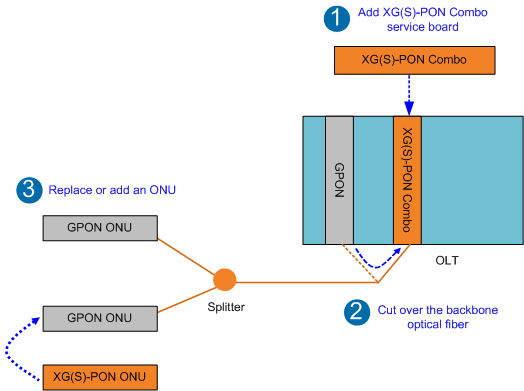This article will introduce that how to enable the remote access function for Huawei GPON ONT.
To simplify access network maintenance, you can enable the function of remotely controlling Huawei ONTs. Generally, you can use the following methods:
Method 1: Enable WAN Access Control on Web page
1. Log in to the web page of the device, In the navigation tree on the left, choose Security > WAN Access Control Configuration. In the pane on the right, click New. In the dialog box that is displayed, set the parameters of the WAN access control. 
2. Then click Apply.
Method 2: Enable Remote Management from ACS
1.Create a WAN Connection on ONT (Routing+Vlan 507+DHCP):
In the navigation tree on the left, choose WAN > WAN Configuration. In the pane on the right, click New. In the dialog box that is displayed, set Parameters as shown below:

Click Apply.
ONT should receive the IP through DHCP after this step. Check Status at System Information > WAN Information. In the pane on the right, you can view the status of the WAN interface.

2. Next Configure TR069 settings for Remote Management from ACS:
In the navigation tree on the left, choose System Tools > TR-069. In the pane on the right, set the parameters related to the interconnection between the ONT and the TR-069 server

Click Apply.
Method 3: Enable Remote Login Web Page by U2000
1. Configure an ONT general VAS profile.
a. From the main menu, choose Configuration > Access Profile Management. In the navigation tree of the tab page that is displayed, choose PON Profile > ONT VAS Profile.
b. On the General ONT VAS Profile tab page, right-click, and choose Add from the shortcut menu.
c. In the dialog box that is displayed, set Name to ONT.
d. Configure static WAN parameters.
In the navigation tree, choose General Para > WAN Device > WAN Device 1 > WAN Connection. Select WAN Connection, right-click, and choose Add IP Connection from the shortcut menu. Select WAN IP Interface1 and add a static WAN interface.
Set WAN Enable to Enable.
Set Connection Type to Routed.
Set Vlan ID the same as the CVLAN ID of the traffic streams configured on the OLT.
Set Addressing Type to Static.

e. Click Next.
f. In the dialog box that is displayed, set vendor ID to HWTC, Terminal Type to General Type, and Version to V1R003C00-ZZ, click Add.

g. In the dialog box that is displayed, choose General Type Config Info > WAN Device > WAN Device 1 > WAN Connection > WAN Connection 1 > WAN IP Interface > WAN IP Interface 1, set WAN Interface Name to ONT and Service Type to INTERNET.
h. Enable the access rights on the WAN.
In the navigation tree, choose General Type Config Info > Security > ACL Services. On the right pane, set HTTP WAN Enables to enable. Then click OK.

2. Bind a general VAS profile.
a. In the Physical Map navigation tree on the Main Topology tab page, double-click the target GPON OLT, or select the target OLT, right-click, and choose NE Explorer.
b. In the navigation tree, choose GPON > GPON Management.
c. In the window on the right, choose GPON ONU.
d. On the GPON ONU tab page, set the search criteria to find the GPON ONU records.
e. Select an ONT from the list, right-click, and choose Bind General VAS Profile from the shortcut menu. In the dialog box that is displayed, select the created profile, and click OK to complete profile binding.
3. Configure the ONT VAS.
a. On the GPON ONU tab page, select an ONT, right-click, and choose Configure Value-Added Service from the shortcut menu.
b. Click the Basic Parameters tab in the dialog box that is displayed, select WAN Port, and set IP Address, Subnet Mask, and Default Gateway.
3. Click OK. The configurations take effect without the requirement of resetting the ONT.
Enter the configured static IP address in the address bar of the Internet Explorer. The login Web page is displayed. Enter the user name and password (The account is the default administrator account of the ONT). The configuration page is displayed.
Note:
1. Complete network security planning before enabling remote access control to ensure that ONTs are logged in to insecure network conditions. After the ONT login operations are complete, disable remote access control in a timely manner. If you do not complete network security planning or do not disable remote access control in a timely manner, the network may become faulty or be attacked, and Huawei will not be responsible for any related subsequences.
2. The above preceding configuration procedure uses the HG8245H as an example. The path menus and web pages of different ONT models may be different.






















